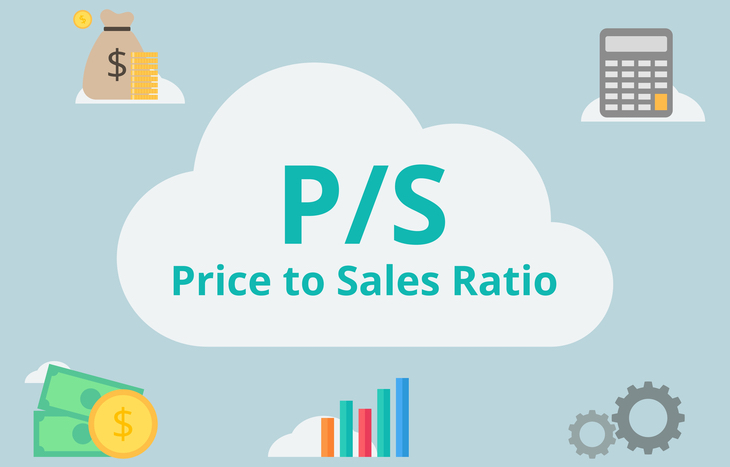The DeFi sector is rapidly growing, and there are many developments happening at the same time. As a result, it can be challenging to stay informed and keep up with the latest happenings in the space. This makes it difficult for stakeholders, particularly investors, to thoroughly evaluate new projects.
‘DeFi Indicators’ were created to help traders and investors address these challenges. These indicators are specific parameters that investors or traders can use to assess the potential success of their investments and stay up-to-date with the latest developments in the market. Also, these indicators assist users in making informed decisions about whether to keep investing in a particular asset.
This article covers eight essential indicators that every DeFi investor should be familiar with and understand to make informed decisions and mitigate risks effectively. Let’s dive in.
Why Should Investors Use DeFi Indicators?
Investors should leverage DeFi Indicators for several compelling reasons. These indicators play a crucial role in enhancing understanding of the crypto markets, offering insights into various facets of a cryptocurrency’s performance.
Key aspects covered include growth potential, liquidity, market sentiment, as well as risks and rewards. Collectively considering these indicators empowers investors to thoroughly evaluate a project’s growth potential, facilitating wise investment choices.
Moreover, the information extracted from these indicators serves as a valuable starting point for formulating investment strategies. Beyond providing details about liquidity and market sentiment, these indicators offer essential information on past and present market trends.
Metrics like network activity and transaction counts unveil a project’s popularity and liquidity, contributing to a comprehensive strategic approach.
However, it’s important to recognize that indicators constitute just one segment of the research process. To achieve better risk management and higher returns on investment, investors should integrate these indicators with other methods.
This comprehensive approach involves analyzing fundamentals, technical aspects, and market sentiment, ensuring a well-rounded strategy for informed decision-making.
8 Important DeFi Indicators

Total Value Locked (TVL)

Total Value Locked (TVL) is a measure of the total value of crypto assets locked in a specific DeFi protocol. This metric is frequently used to evaluate how much value users have invested in a DeFi protocol and its overall significance.
For DeFi projects, the TVL metric is critical, functioning as a barometer of user appeal and market performance. A higher TVL signifies a more substantial DeFi protocol with a greater accumulation of locked crypto assets, reflecting the heightened trust users place in it.
When comparing two DeFi protocols with the same TVL, it’s essential to consider if they offer incentives to users who lock their tokens. When TVL is equal, non-incentive-based protocols signal better user trust than incentive-based protocols.
Token Balance Movement
While assessing DeFi tokens, it’s essential to check for signs of normal token circulation and natural trading. Monitoring the trends and movements of token balances offers investors valuable insights into a token’s activity, enabling them to assess its usage patterns and identify any significant trends or irregularities.
A good mix of tokens shifting between personal wallets and exchanges shows a lively market with real investor involvement. On the other hand, any strange or questionable movements warrant careful investigation to confirm the token’s authenticity and the project’s trustworthiness.
Unusual token movements might be a sign of shady activities such as market manipulation, insider trading, or fraud.
P/S Ratio (Price-to-Sales Ratio)

For those familiar with traditional finance, the Price-to-Sales ratio (P/S) is a well-known metric indicating the investment required to earn one dollar. In DeFi, the P/S ratio measures a protocol’s market value relative to its revenue(usage); thus, it serves as an indicator of reliability. This ratio helps assess how easily an asset can be traded; a higher ratio reflects better liquidity. It’s instrumental in identifying popular assets or trading pairs in the market.
Please note that the interpretation of the P/S ratio varies among DeFi protocols. In a decentralized exchange (DEX), it signifies the market’s payment for each dollar of transaction fees, while in lending protocols, it represents the market’s payment for each dollar of borrowing interest.
When comparing DeFi protocols across different categories, the P/S ratio might not be the ideal tool, but within the same category, it remains quite useful.
Token Supply
A project’s Total Token Supply is simply the number of coins or tokens that exist, including those in circulation and those that are inaccessible in various ways. It’s calculated by subtracting the burned or destroyed coins from the total number of mined or issued coins.
For instance, many cryptocurrencies are characterized by a maximum supply, which represents the total number of coins that will ever be created. Although a few, like Ethereum’s ETH, don’t have such a limit, most cryptocurrencies do, even if it’s set at a very high number.
This metric helps you assess how rare a coin might be and how that rarity can influence its price. Understanding the distinction between maximum, circulating, and total supply is crucial for making informed investment choices.
Project Documentation Completeness
When evaluating a DeFi project, it’s crucial to consider how much information is available to the public and potential investors. A good project should provide a detailed white paper that explains the protocol’s workings and token economics. It should also clearly explain the governance system and the voting rights given to token holders.
The completeness of project documentation is always an important indicator to consider. Pay close attention to all important details, undertones, and subtle messages in the project’s whitepaper, website, and social media posts.
Inflation rate
The inflation rate measures how the value of your investments decreases over time as prices for goods and services rise due to economic growth and more money being circulated.
This knowledge is crucial for making informed investment decisions, particularly in the DeFi space, where tracking the inflation rate helps ensure that your investments maintain their value in a constantly changing market. It allows you to stay ahead and protect your assets.
Some assets start with a fixed supply, but more tokens can be made later, which increases the supply and might cause inflation. While moderate inflation is not necessarily harmful, too much of it can reduce returns. So, when looking at other indicators, remember to think about how inflation could affect your investments.
Non-Speculative Usage
The Non-Speculative Usage metric helps investors understand a cryptocurrency’s real value. Many cryptocurrencies lack practical use. Even if a speculative token is popular, it’s at risk of a sudden crash. So, assessing non-speculative usage is vital to finding valuable cryptocurrencies with real-world applications that can provide more stability.
For instance, consider the Squid token, which was inspired by the popular South Korean Fantasy drama, Squid Game. It lacked a genuine utility and became a pump-and-dump scheme, causing significant losses for traders. The aftermath of the token highlights the risks of speculative trading of crypto tokens without genuine utility.
The non-speculative usage indicator helps investors assess how a cryptocurrency is used beyond just trading on exchanges. For instance, ETH, despite not having a maximum supply, has real usage because it supports decentralized apps (dApps).
Unique Address Count
The Unique Address Count is the number of addresses actively involved with a cryptocurrency. If a cryptocurrency has a low number of real-time users, it might indicate decreasing interest. This decline in interest can lead to a sudden and substantial drop in the cryptocurrency’s value, resulting in significant financial losses for its holders.
Though Unique Address Count is a valuable metric, relying solely on it is not the best course of action. A comprehensive evaluation should consider multiple factors. Sometimes, developers can make fake trading accounts with bots on a DeFi platform. In these cases, Unique Address Count alone may not reflect the actual demand for an asset. So, investors should rely on a variety of indicators to get a more accurate picture of the market.
In Conclusion
- Even the most skilled cryptocurrency traders can’t predict the market with absolute certainty. However, when investors combine key indicators with various other analysis tools, it can significantly improve investment strategies, making those approaches to investing far more effective.
- It’s also crucial to understand which indicators are most relevant for various types of investments. Instead of taking blind risks in the cryptocurrency market, it’s a wise move to invest some time in understanding key indicators. These indicators act as valuable tools for investors, offering insights that can enhance profitability and reduce risks.
- By taking this approach, investors make informed and calculated entries into the world of cryptocurrencies, thereby increasing the likelihood of financial success. The strategic use of indicators contributes to a more nuanced and thoughtful investment journey in this dynamic and evolving market.
Disclaimer: This article is intended solely for informational purposes only and should not be considered trading or investment advice. Nothing herein should be construed as financial, legal, or tax advice. Trading or investing in cryptocurrencies carries a considerable risk of financial loss. Always conduct due diligence.
If you would like to read more articles like this, visit DeFi Planet and follow us on Twitter, LinkedIn, Facebook, and Instagram, and CoinMarketCap Community.
“Take control of your crypto portfolio with MARKETS PRO, DeFi Planet’s suite of analytics tools.”





















